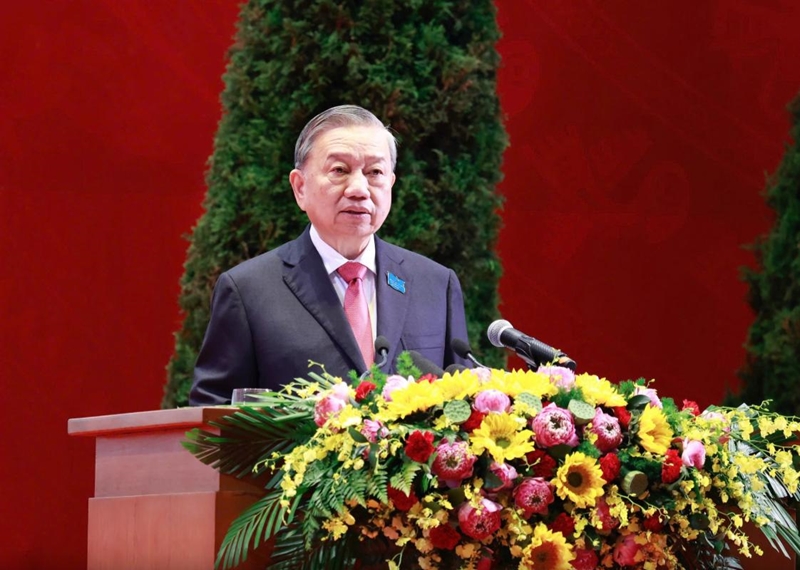Addressing the 18th Hanoi Party Congress for the 2025-2030 tenure on October 16, the Party chief underlined that the congress offers an opportunity for self-reflection, establishing new goals, and creating momentum for the capital’s development in a new era.
Noting that the country and Hanoi are entering a new development era with opportunities and challenges, he emphasized that the city Party Organization, authorities, and people must recognize the capital's special role for the nation and its responsibility to meet the expectations of both the people of Hanoi and the country as a whole.
    |
 |
|
Party General Secretary To Lam addresses the 18th Hanoi Party Congress for the 2025-2030 tenure on October 16. (Photo: VGP) |
To guide Hanoi into the new phase, he urged a holistic and systemic vision, where ideology, institutions, space, economy, and people combine into a sustainable development entity. The first breakthrough, he emphasized, must be building a pure, strong Party Organization and political system that is exemplary and accountable to the people.
He envisioned Hanoi as a city of time-honored culture, identity, and creativity, aspiring to be a "civilized, modern, and sustainable capital" with both contemporary wisdom and global stature. Culture represents the root, the essence of national wisdom, fostering trust and resilience. Identity forms the competitive advantage, ensuring Hanoi retains its historical soul while attracting talent and driving knowledge-based economic growth. Creativity, he said, is the engine of development, transforming heritage into vibrant living value, while preserving and evolving the city’s physical and intellectual legacy, he stated.
The General Secretary underscored that development must seamlessly integrate culture, space, economy, and people. Every decision, project, and investment must maintain traditional values, create cultural spaces for future generations, and foster innovation. He called for the development of creative "nodes" across the capital, ensuring a steady flow of creative energy from heritage, knowledge, and technology to cultural and innovation hubs.
This vision includes creating three "creative poles" of Hanoi: heritage - the historic inner city and the Red River waterfront; knowledge - the Vietnam National University and other research and educational centers; and technology - the Hoa Lac High-Tech Park and other innovation zones. These will become the city's creative engine, blending history, knowledge, and modern technology to shape Hanoi as a future-focused metropolis.
However, the Party leader identified four long-standing issues Hanoi faces, namely traffic congestion, urban order, pollution (air, water, and waste), and flooding. To address these, Hanoi must embrace a new governance model of shifting from management to creation; from fragmentation to integration; and from short-term solutions to sustainable ones.
Additionally, Hanoi must transform its "single-pole" model into a "multi-pole, multi-center" structure. Rather than concentrating all functions in the overburdened inner city, Hanoi’s urban spaces should be reorganized into well-linked decentralized centers, each fulfilling specific roles while contributing to a unified city.
Hanoi should become a hub for scientific research, technology, and innovation, a center for policy development, new technologies, talent training, and a launchpad for national ideas. It should work alongside Ho Chi Minh City as the country’s leading innovation and technology hubs, he suggested.
General Secretary Lam also emphasized the need for Hanoi to give greater attention to human development, remain a solid political and security stronghold, and strengthen international cooperation with more active engagement in the network of “green, smart and creative” cities in the world.
Source: VNA